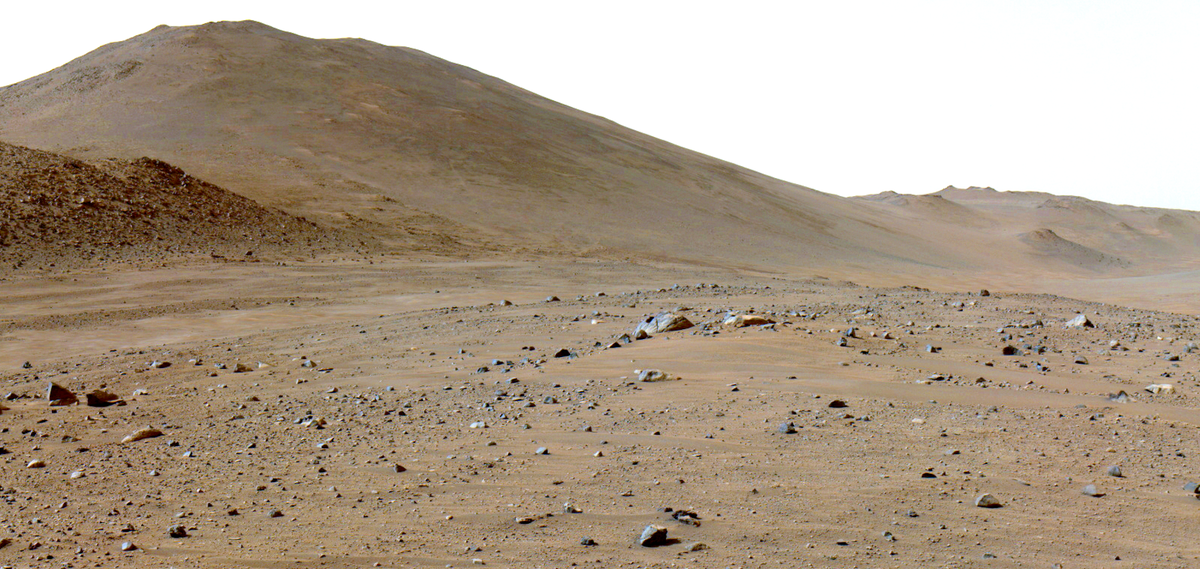Nasa rover finds mysterious never-seen-before light-toned boulder on Mars

Nasa’s Perseverance Mars rover has discovered a never-before-seen light-toned boulder in a field of dark rocks, a finding that sheds new light on the Red Planet’s geology.
The rover encountered the rock as it traversed Neretva Vallis, a region thought to contain evidence of an ancient river that existed billions of years ago.
Perseverance had changed course to avoid rough terrain, going through a dune field to reach a hill called Mount Washburn.
Images taken by the rover along its new path show the hill is covered with boulders, some of which Nasa described as “a type never observed before on Mars”.
One of the boulders, about 18 inches across and 14 inches tall, was peculiarly light-toned rock in a field of darker boulders.
Researchers said the boulder is “in a league of its own” among Martian rocks.
At the base of the new location, the rover also spotted rocky light-toned outcrops that likely represent either ancient rock exposed by river erosion or sediments that filled the channel.
“The diversity of textures and compositions at Mount Washburn was an exciting discovery for the team, as these rocks represent a grab bag of geologic gifts brought down from the crater rim and potentially beyond,” Brad Garczynski, co-lead of the Perseverance mission, said in a statement.
“But among all these different rocks, there was one that really caught our attention.”
The strange boulder, nicknamed Atoko Point, was found to be made up of minerals pyroxene and feldspar by instruments aboard the rover.
Some scientists suspect that these minerals likely came from magma below the Martian surface.
Others say it may have been produced on a different part of Mars and moved along the ancient river channel to its present location.
“Either way, the team believes that while Atoko is the first of its kind they’ve seen, it won’t be the last,” Nasa said.

The recent discovery was made as the Perseverance rover looks for deposits containing the minerals carbonate and olivine in a region on Mars called the “Margin Unit”.
These minerals are of interest to researchers as they are known to encapsulate remnants of the past for long periods, meaning there is a much higher chance of finding signs of ancient alien life on Mars in these deposits.
The rover is currently assessing whether a rock core sample should be collected in this region, according to Nasa.

 Yahoo News
Yahoo News 
